#Shammuramat
Explore tagged Tumblr posts
Text
The Fake Texts of Ancient Greek 'Historians': the Behistun Inscription, Ctesias, Diodorus Siculus, Darius I the Great, and Semiramis
In a previous article published under the title 'Aristotle as Historical Forgery, the Western World’s Fake History & Rotten Foundations, and Prof. Jin Canrong’s Astute Comments', I wholeheartedly supported the position taken by the prominent Chinese Prof. Jin Canrong about Aristotle and I explained why Aristotle never existed as he is known today and most of his texts were not written by him, but by the pseudo-Christian Benedictine monks of Western Europe for the purpose of the ferocious imperial and theological battle that Rome carried out against New Rome-Constantinople and the Eastern Roman Empire. You can find the table of contents and a link to the publication at the end of the present article.

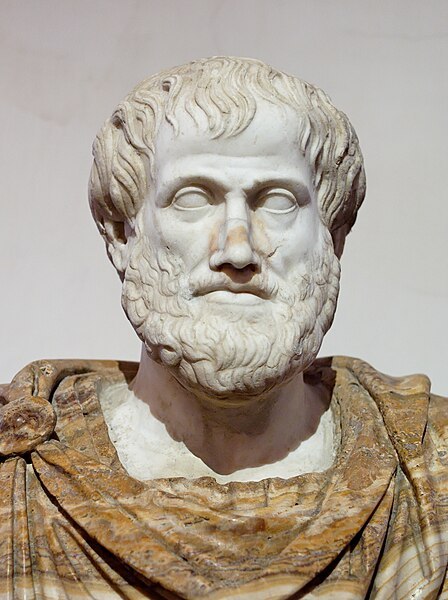
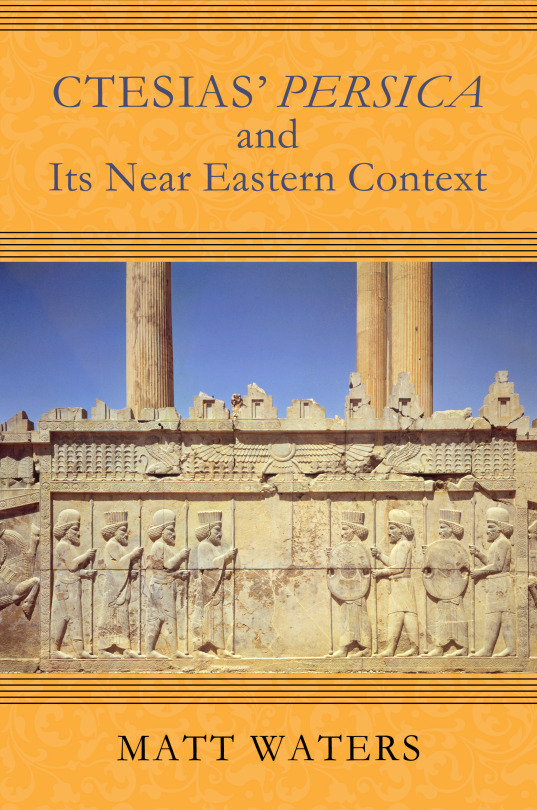

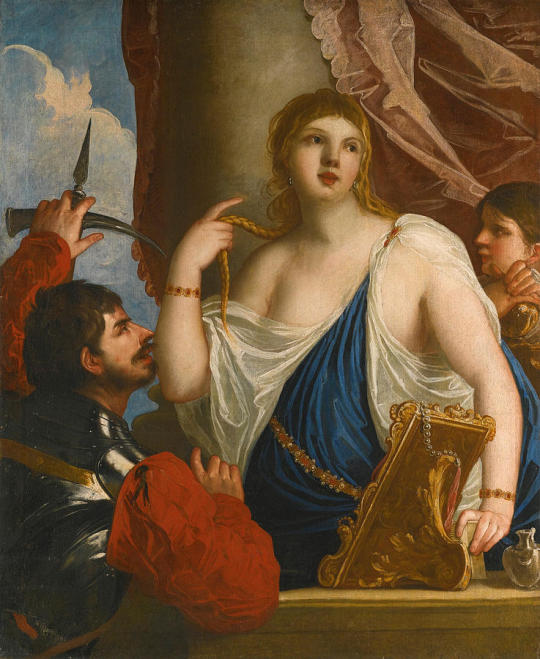
Contents
Introduction
I. A fictional concept: the origin of the fraud
II. A construct based on posterior textual sources
III. The deceitful presentation
IV. 5th century BCE texts found in 15th c. CE manuscripts do not make 'History'.
V. Abundant evidence of lies and deliberate distortions attested in the manuscript transmission
VI. Darius I the Great, the Behistun inscription, and Ctesias
VII. The historical Assyrian Queen Shammuramat and the fictional Queen Semiramis of the 'Ancient Greek sources'
VIII. The malignant intentions of the Benedictine liars: from the historical Darius I the Great to the fictional Semiramis
IX. The vicious distortions of the Benedictine liars: from Ctesias to Herodotus
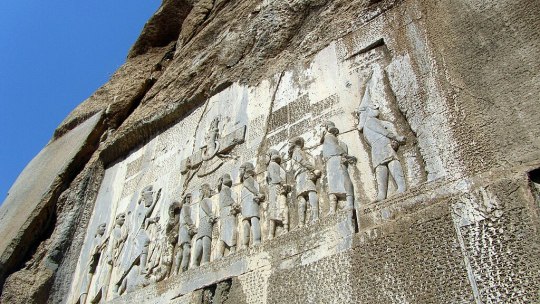
The Behistun inscription
Introduction
In the present article, I will offer a typical example of text falsification carried out by the Catholic monks, who did not 'copy and preserve' manuscripts of ancient Greek and Latin texts, as it has been mendaciously said by Western European and North American academics and lying scholars, but they purposefully falsified, distorted, concealed, destroyed and/or contrived numerous texts.
This enormous forgery took place in Western Europe between the 2nd half of the 8th century and the 1st half of the 15th century; the colonial era was launched exactly afterwards. For this reason, few manuscripts with Ancient Greek and Roman texts date before the 8th c.; in fact, most of them have been either distorted and replaced or hidden in the vast libraries still owned, controlled and administered that the anti-Christian Roman Catholic Church.
The purpose of this devious and evil effort was the fabrication of a fake narrative about the forged antiquity and the supposed importance of the Western Europeans according to the needs of world conquest, prevalence and preponderance of the pseudo-Christian Roman Catholic Church; this bogus-historical dogma, as direct opposition to and ultimate rejection of Orthodox Christianity, would be initially imposed as the 'scientific discipline of History' in Western Europe and subsequently projected onto the rest of the world by means of colonial invasion, indigenous identity destruction, moral integrity demolition, cultural heritage disintegration, educational subordination, economic exploitation, military subjugation, and socio-political domination.
In other words, the monastical scribes and copyists created an entirely fake Euro-centric past, which became the rotten foundation of Western Europe. This fallacy became known as Judeo-Christian world and Greco-Roman civilization. However, the decipherment of ancient languages (Egyptian hieroglyphic, Old Achaemenid Iranian, Assyrian-Babylonian, Sumerian, Hurrian, Hittite, Urartu, Ugaritic, etc) and the study of millions of original texts, which were not copies of earlier sources but contemporaneous to the events that they narrated, sounded the death knell of the era of history fabrication programs.
With the post-Soviet rise of the great continental powers (China, India, Russia, etc.), the economic-military-political-ideological-educational-academic-cultural tyranny of the Western World started being overthrown throughout the earlier colonized world. The historical forgery that the colonial rulers imposed collapsed, the falsehood of the Eurocentric dogma of World History started being revealed and rejected, and an overwhelming project of total de-Westernization appeared as a prerequisite for the liberation of the Mankind from the lies of the European Renaissance, the Western Humanities, the White Supremacism, the Western European colonialism and racism, as well as from the falsehood of numerous subsystems of the construct, such as Classicism, Hellenism, Orientalism, etc.
In our days, it is imperative for anti-colonial scholars to unveil the distortions applied to Ancient Greek and Latin texts by the medieval monks. Consequently, historians from all over the world have to work together in order to denounce and obliterate the Western fraud and the fake History of the Western Man, which consists in arbitrarily taking 14th c. CE manuscripts as authentic narratives of Ancient History.
I. A fictional concept: the origin of the fraud
Apparently, the present brief article cannot be an exhaustive presentation of the Western fraud, and of the historical forgery that the Western monks, manuscript copyists, collectors, academics and propagandists attempted to impose worldwide through colonial conquests, massacres and tyrannies. However, I can still enumerate the major founding myths of the Western World.
Two thematic circles of historical distortions and fraudulent claims made by the Western academia revolve around the following two entirely fabricated entities, which have conventionally but erroneously been called
a) "the Greco-Roman world" and
b) "Biblical Israel" and "Judeo-Christian civilization".
These ahistorical entities never existed. The original concept of those notions is purely fictional, and it therefore remains always unquestioned in the fraudulent Western universities. In this regard, the sources that the Western academics evoke to support their claims are posterior, untrustworthy, forged and therefore worthless.
At times, some of those texts represent merely ancient authors' misperceptions of earlier texts and authors; however, more often, the ancient texts have been tampered with. On other occasions, ancient texts that refute the lies of other historical sources are hidden from the general public and conventionally discussed among the Western academic accomplices.
II. A construct based on posterior textual sources
The entire construct hinges on the deceitful presentation of several types of material forged, collected, concealed, interpreted, contextualized, narrated, repeatedly but intentionally discussed, supposedly questioned, and selectively popularized; this was due to the fact that the said material was incessantly utilized for the colonial needs and targets of the Western European powers (England, France, Holland, Spain, Portugal, and more recently the US). In fact, the Western World's fake History was created as the ultimate support of all colonial claims.
This process happened within a system in which posterior textual sources (preserved in medieval manuscripts) have occupied the central position, whereas the ancient epigraphic material, which was contemporaneous to the historical events under study, has been deliberately disregarded.
All later discovered data and pieces of information were either adjusted to the construct or methodically hidden; this is how the original concept, pathetically believed almost as a religious dogma, remained totally unchallenged down to our days.
III. The deceitful presentation
The quintessence of the deceitful presentation involves a vicious trick; people (pupils and students, but also scholars and intellectuals, as well as the general public) are taught and made accustomed to care mainly about the absolutely insignificant dates of birth and death of historical persons (authors, rulers, etc.), and not about the dates of the manuscripts in which these individuals are mentioned as supposed authors; this situation turns readers, students and scholars into pathetic idiots.
Subsequently, we cannot seriously afford to describe Herodotus as a 5th c. BCE writer, because there is no manuscript with texts attributed to him, dating before the 10th c. CE. In addition, if we take into account the enormous number of other ancient authors decrying, denigrating and rejecting Herodotus' absurdities and malignancy, we have to permanently and irrevocably obliterate Herodotus from the History of Mankind and consider his false, paranoid and racist texts as a double Crime against the Mankind:
first, with respect to the original narrative (to which we don't have access as it was distorted by medieval monastical scribes and copyists) because the author attempted to disparage the superior Iranian civilization and the majestic Achaemenid universalist empire, while undeservedly praising the South Balkan barbarians, and
second, as regards the currently available text, which was forged as per the discriminatory intentions of the monks who altered and distorted it in their effort to fabricate the fake, modern divide (or dichotomy) East-West, and to offer a shred of historicity to it.
IV. 5th century BCE texts found in 15th c. CE manuscripts do not make 'History'.
People get therefore addicted to considering as a true and original 'work' (of an ancient author) the manuscript (or manuscripts) in which the specific treatise, essay or book was copied perhaps 10 or 15 centuries after the author composed it. Due to a long chain of intermediaries (namely library copyists, librarians, scholars, monks, collectors, purchasers and/or statesmen), the transmitted text may have been partly or totally changed.
There is absolutely no guarantee as regards the honesty, the good intentions, the unbiased attitude, and the benevolent character of the perhaps 5, 10, 20 or 50 persons who -living in different eras and without knowing one another- may have constituted the chain of (unknown to us) intermediaries between the hand of the author and that of the last copyist whose manuscript was preserved down to our times.
Example: very little matters today whether the ancient author Diodorus Siculus or Siceliotes (西西里的狄奧多羅斯) actually lived in the 1st c. BCE or in the 3rd c. CE; quite contrarily, what is important for history-writing is the fact that the earliest known manuscript of his famous 'Bibliotheca Historica' (世界史) dates back to the 10th c. CE.
Consequently, the first piece of information that should be stated after the name of any 'ancient' Anatolian, Macedonian, Thracian, Greek, Roman and other author is the date of the earliest extant manuscript of his works.
V. Abundant evidence of lies and deliberate distortions attested in the manuscript transmission
An extraordinarily high number of original sources excavated in Mesopotamia, Egypt, Anatolia, Canaan, Iran and elsewhere, and subsequently deciphered, can be dated with accuracy; example: the Annals of great Assyrian emperor Tiglath-pileser III (745-727 BCE) were written during his reign. They are contemporaneous and therefore original.
However, in striking contrast to them, almost all the manuscripts with the works of ancient Greek and Roman authors whose texts have formed the backbone of the fraudulent historical dogma of the Western academia are not contemporaneous but posterior by, at times, 1500 or 2000 years.
Even worse, numerous ancient Greek authors' texts were not preserved through a manuscript tradition at all; they were saved as references in posterior authors' works. This concerns, for instance, Ctesias (克特西亞斯), an Ancient Carian (Anatolian) physician and erudite scholar, who lived and worked in the court of the Achaemenid Iranian emperor Artaxerxes II in the 5th c. BCE.
Later, willing to offer potential guidebooks to Iran and India for the use of various peripheral peoples and tribes of the Balkan region, Ctesias elaborated in Ancient Ionian (愛奧尼亞希臘語) two treatises to describe the state of things in Iran and in India. To the Western academic bibliography, his works are known (in Latin) as 'Persica' and 'Indica'.
These texts were not saved integrally in manuscripts copied for the purpose of preserving Ctesias' works, but they were preserved in Diodorus Siculus' 'Bibliotheca Historica'. Although he is not known through authentic and contemporaneous Iranian sources, we can deduce that Ctesias certainly spoke fluently the official language of the Empire and read Old Achaemenid cuneiform. Eventually, he may have also studied and learned Babylonian and Elamite cuneiform, namely two ancient Mesopotamian cuneiform languages and writings the use of which was maintained by Iranian scribes.
Apparently, Ctesias had a firsthand insight, as he lived for many years in Parsa (Persepolis), the capital of the Achaemenid Empire and he also traveled extensively along with the Iranian emperor. But, unfortunately, the following ordeal was produced.
VI. Darius I the Great, the Behistun inscription, and Ctesias
One century before Ctesias served Artaxerxes II, the empire of Iran was saved by Darius I the Great (大流士一世; reign: 522-486), who overthrew a usurper, namely the Mithraic (密特拉教祭司) magus Gaumata (高墨达), and by so doing, preserved on the throne a dynasty of faithful Zoroastrian (瑣羅亞斯德教徒) monarchs.
To commemorate his great victory and the consolidation of the his dynasty, Darius I the Great had an enormous rock relief and a monumental inscription (貝希斯敦銘文) engraved on the rocks of Mount Behistun (貝希斯頓山), at a distance of 150 km west of Hamadan (哈马丹; Ekbatana/埃克巴坦那) in Western Iran (15 m high by 25 m wide and 100 m up the cliff). As it can be easily understood, these events occurred after the assassination of Cambyses, at the very beginning of Darius I the Great's reign.
It goes without saying that the successors of Darius I the Great and the imperial Iranian administration knew perfectly well the historical details and were fully aware of the imperial inscription that immortalized the event, which had obviously become the cornerstone of the imperial education.
VII. The historical Assyrian Queen Shammuramat and the fictional Queen Semiramis of the 'Ancient Greek sources'
However, one century later, when Ctesias lived in Iran, served the Iranian Emperor, and spoke Old Achaemenid Iranian (and if not, he was surrounded by the Empire's top interpreters and advisers), something disastrously odd 'happened'.
According to Diodorus Siculus, who explicitly stated that he extensively quoted from Ctesias' text (Bibliotheca Historica, II 13), the imperial Carian physician and author appears to have attributed the Behistun inscription and the rock reliefs to none else than the Assyrian Queen Shammuramat (薩穆-拉瑪特), who was the queen consort of the Assyrian Emperor Shamshi Adad V (沙姆什·阿達德五世; reign: 824-811) and co-regent (811-805) during the first years of reign of her son Adad Nirari III (阿达德尼拉里三世; reign: 811-783)!
Furthermore, in the 'Ancient Greek' text of Diodorus Siculus, the monumental inscription was said to be written in Assyrian cuneiform (Συρίοις γράμμασιν)! Even worse, in the same text (as preserved today), it was also stated that, in the rock relief, there was also a representation of the Assyrian queen!
Ctesias' text, as preserved by Diodorus Siculus, is truly abundant in information, but it is historically impossible and therefore entirely forged. Due to this and many other texts, an enormous chasm was unnecessarily formed between
a) the historical queen Shammuramat of Assyria, whose historicity is firmly undeniable, due to the existence of several contemporaneous cuneiform sources excavated in Assyria, and subsequently deciphered and published,
and
b) the purely fictional Assyrian queen Semiramis (沙米拉姆) of the posterior Ancient Greek textual sources that were supposedly 'preserved' (but in reality deliberately distorted and forged) in the Benedictine manuscripts of Western Europe's monasteries.
However, if we examine closely the facts, we will surely understand what truly occurred in this case; then, we will be able to fathom how the fake History of the Western world was fabricated.
The Behistun inscription is trilingual, as it was written in Old Achaemenid Iranian (the earliest form of written Iranian languages), Babylonian, and Elamite; this was a very common practice during the Achaemenid times (550-330 BCE). The main figure of the associated rock relief is Darius I the Great, evidently the representation of a male royal.
One way or another, with respect to the Behistun inscription and rock relief, Ctesias certainly knew everything that we know today after the successive decipherments of the Old Achaemenid, Babylonian and Elamite cuneiform writings, or perhaps even more, due to the then extant oral tradition.
VIII. The malignant intentions of the Benedictine liars: from the historical Darius I the Great to the fictional Semiramis
The Behistun inscription is not Assyrian; the representation is not that of female royal; and the monument is totally unrelated to Shammuramat, who had lived 300 years before Darius I the Great and 400 years before Artaxerxes II's physician Ctesias. More importantly, by that time, the Assyrian Empire did not occupy the lands surrounding Behistun. Accompanied by Iranian imperial officers and his associates, Ctesias certainly learned all the details of the monumental inscription that we can now read in articles, courses, lectures, books and encyclopedias.
The narrative was a triumph for Darius I the Great and a spectacular rebuttal of the vicious Mithraic Magi who had supported the defeated evil sorcerer and villain Gaumata. Apparently, writing a guidebook for Iran to help marginal people of the Empire's Balkan periphery, Ctesias did not have any reason to say lies. Moreover, we don't have any reason to believe that Diodorus Siculus needed to distort the truth to that extent, when copying and thus preserving Ctesias' masterpiece for the posterity.
However, the transmission of the details about the Behistun inscription embarrassed the Benedictine copyists who wanted to denigrate Darius I the Great and to portray his great empire in a most derogatory manner. They had already proceeded in this manner, distorting other manuscripts, forging texts, and fabricating their pseudo-historical narratives at will.
That is why Ctesias' pertinent text, which had certainly been preserved in its original form within Diodorus Siculus' Bibliotheca Historica, was intentionally distorted by the Benedictine 'Holy Inquisition of Libraries', which fabricated the myths of today's Western world some time after the middle of the 8th c. CE. To be accurate, Ctesias' historical description was entirely replaced by a fictional and historically nonsensical account.
The unbelievable lies -invented and included in Diodorus Siculus' quotations from Ctesias- risked making of the fictional queen Semiramis a world ruler! Whereas the Assyrian Empire at the end of the 9th c. BCE did not control even the western half of today's Iranian territory, the unequivocally mythicized Semiramis had supposedly sent her armies up to India where those fictitious Assyrian soldiers were trampled by the elephants. This worthless narrative that replaced Ctesias' original text may very well have been invented as a 'historical' excuse for Alexander the Great's failure to advance deep inside India.
IX. The vicious distortions of the Benedictine liars: from Ctesias to Herodotus
But if the fictional Semiramis' Indian campaign is entirely false, so are then the preposterous narratives of Herodotus about Darius I the Great's and Xerxes I the Great's campaigns in the insignificant and barbarian circumference of South Balkans. These texts involved evil purposes, heinous anti-Iranian biases, fictional battles, racist discourses, vicious lies, incredibly large number of the Iranian armies, and absurdly high number of Iranian casualties.
The mendacious but idiotic Benedictine monks, who wrote those slander tales did not apparently expect that, sometime in the future, excavations would bring to light splendid Iranian antiquities, original cuneiform documentation, and trustworthy contemporaneous historical sources, whereas a systematic effort of decipherment would offer to people all over the world direct access to historical texts written in dead languages, thus irrevocably canceling Herodotus' nonsensical report and, even more importantly, the later distortions that the Benedictine monks made on their worthless manuscripts.
In any case, had those fictional campaigns against 'Greece' had a shred of truth to them, they would have certainly been documented one way or another in various Old Achaemenid, Babylonian, Elamite, Imperial Aramaic, Egyptian hieroglyphic or other sources; but they were not.
Even worse, the meaningless and ludicrous battles of Marathon, Thermopylae, Salamis, and their likes would have been commemorated by the Seleucids, the Ptolemies, and the Attalids all the way down to the Romans and the Eastern Romans. But we know quite well that the nonexistent, fictional past of the so-called Ancient Greek world was absolutely irrelevant to them: precisely because it had not yet been fabricated.
===================
Aristotle as Historical Forgery, the Western World’s Fake History & Rotten Foundations, and Prof. Jin Canrong’s Astute Comments
Contents
I. Aristotle: a Major Founding Myth of the Western World
II. When, where and by whom was the Myth of Aristotle fabricated?
III. The Myth of Aristotle and its first Byproducts: Scholasticism, East-West Schism, the Crusades & the Sack of Constantinople (1204)
IV. Aristotelization: First Stage of the Westernization and the Colonization of the World
V. Aristotelization as Foundation of all the Western Forgeries: the so-called Judeo-Christian Heritage and the Fraud of Greco-Roman Civilization
VI. The Modern Western World as Disruption of History
VII. The Myth of Aristotle and the Monstrosity of Western Colonialism
======================
Download the article in PDF:
#Ctesias#Diodorus Siculus#Behistun Inscription#iran#Achaemenid#Behistun#Bisotun#Darius I the Great#Gaumata#Mithraism#Zoroastrianism#Ahura Mazda#Mithra#Xerxes I#Herodotus#Ancient Greeks#manuscript transmission#Shamshi Adad V#Adad Nirari III#Shammuramat#Semiramis#Benedictines#Renaissance#Classicism#Classics#Orientalism#Hellenism
4 notes
·
View notes
Text
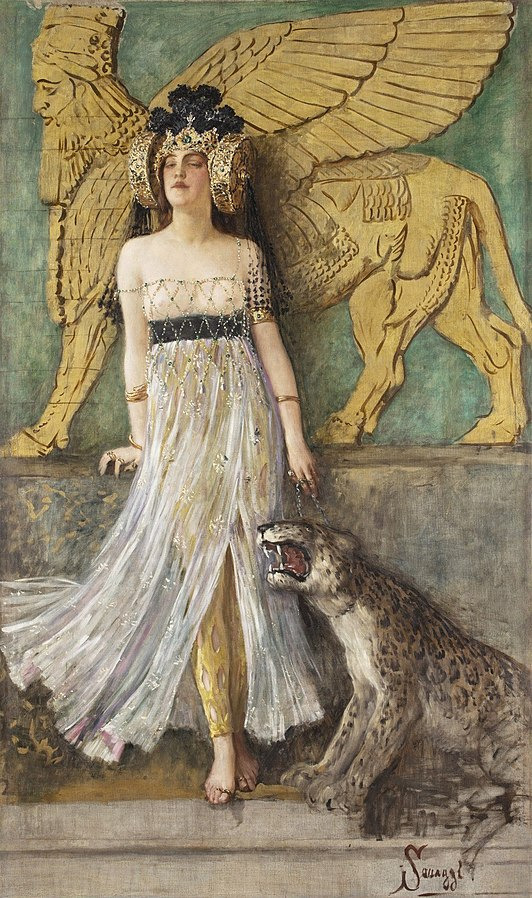
Cesare Saccaggi (1868-1934) "Great Semiramis, Queen of Assyria" (c. 1905) Oil on canvas, gold and precious stones The myth of Semiramis has its roots in late antiquity. Historiography, religion, art and literature have contributed to passing on different and contradictory legends linked to her figure over the centuries: some recognize her as the enlightened Assyrian ruler Shammuramat, wife of King Shamshi-Adad V and regent of his son Addu-Nirari III--to whom we owe the realization of the hanging gardens of Babylon.For others, Semiramis is the daughter of a nymph, abandoned in the desert and then fed by doves - the 'daughter of the air', according to Calderón de la Barca and Carlo Gozzi. Or she is the daughter of the goddess Derceto and the Syrian Caistro, married first to Onne, then to King Nino, with whom she had a son who, according to tradition, when he became an adult, chased her from the throne and killed her. During her reign, Semiramis conquered Mesopotamia, Egypt and Ethiopia. Herodotus and Diodorus Siculus speak of her as a great and good sovereign.
#paintings#art#artwork#painting#female portrait#cesare saccaggi#oil on canvas#fine art#italian artist#gold#precious stones#portrait of a woman#big cat#animals#costume#costumes#history#mythology#assyrian#ancient assyria#aesthetic#aesthetics#white dress#dressess#early 1900s#early 20th century
452 notes
·
View notes
Text
Shamura's Name
When you look up a name's meaning, and can only find one source that gives it one, I take with a grain of salt. And I don't think "the Parentz dot com" is a particularly reliable source. So Shamura meaning diamond? I reject that. Wholly.
There's Shammuramat, the name of an ancient Assyrian queen, but we don't actually know its etymology. It's assumed it means something close to "high heaven", based on a similar ancient language. Based on how Tiamat is thought to mean "one who embodies the sea", Shammuramat is likely in the same vein. "One who embodies"... something.
With no real way of finding the meaning of just "Shammura" in Assyrian, I took a different route.
Anura, Darkwood, even Anchordeep to an extent, have very literal names. So let's assume Silk Cradle does too.
We have six places that we consider the "cradles of civilization": Mesopotamia, Ancient Egypt, Ancient India, Ancient China, Caral-Supe, and Olmec. They're considered the starting points of civilization as we know it.
And one of these cradles also happens to be the birthplace of silk. Ancient China. Silk Cradle is likely just a clever reference to that.
If we consider Silk Cradle to be Shamura's place of origin, then Shamura's name is most likely either Chinese or Japanese.
Now, I'm not as familiar with Chinese, so someone might have to correct me on this, but there is no "ra" in Chinese. The closest would be "re" but I was having trouble finding a fitting character for it.
However, I do know Japanese! "Mura" appears commonly in Japanese names as both a prefix and a suffix. It means village. Its use in names generally translates to [from the] "X" Village. For example, Nakamura means "Middle Village" and Yamamura means "Mountain Village".
"Sha" has many meanings, but the most relevant one is most likely in reference to Shinto Shrines. Specifically a type of Tudigong, the title granted to the local earth (or soil) deity. The literal translation would be "Lord of the Land" or "Lord of the Earth".
Tudigongs are at the top of the divine pyramid, save for Houtu, the overlord herself. Below them are the Sheji, the Shan Shen, the City Gods, and the Landlord Gods in the order.
So "Shamura" would translate to [from the] Earth Deity's village.
Which leaves only one question. Who was the Lord of the Earth about 3000 years ago?
Ala.
Ala is the deity of the Earth, Fertility, and Morality. She is considered to be the ground itself, so to disrespect the earth is to disrespect her. She rules over the underworld and casts judgment on humans. And she seems to play a similar role in-game based on her Relic descriptions.
Her symbol is the crescent moon. She's also represented by pythons. And not only is the crescent moon the shape on Shamura's Crown...

It's also the symbol used for the Seal of the Bishops, the relic that freezes time.
But that's just an observation.
A SERIES of observations.
#cult of the lamb#cotl theory#cotl shamura#cotl#cult of the lamb theory#the moon necklace might also point to ala's fate as well
47 notes
·
View notes
Text
Oops I originally described Nimrod and Semiramis as "two people who historically had nothing to do with each other" but I got my wires a bit crossed and forgot that Nimrod's the guy who appears to be a purely legendary figure. (Semiramis, on the other hand, appears to be semi-legendary, based somewhat on the historical queen Shammuramat.)
In any case, "actually like 99% of all gods and goddesses are based on this ancient king and queen of Babylon because Babylonian hyperdiffusionism" is an absolutely ridonkulous take, and the dude who came up with it (Alexander Hislop) is the reason you're seeing these memes about the word "Easter" deriving from "Ishtar" and the pope's hat being based on Dagon's hat, and also why so many conspiracy theorists are going on about a Babylonian mystery cult secretly pulling the world's strings.
9 notes
·
View notes
Text
SEMIRAMIS // QUEEN OF ASSYRIA
“She was the legendary Lydian-Babylonian wife of Onnes and of Ninus, who succeeded the latter on the throne of Assyria, according to Movses Khorenatsi. She was based on the life of Shammuramat, who was the Assyrian wife of Shamshi-Adad V (ruled 824 BC–811 BC). She ruled the Neo-Assyrian Empire as its regent for five years, before her son Adad-nirari III came of age and took the reins of power. She ruled at a time of political uncertainty, which may partly explain why Assyrians may have accepted the rule of a woman when it was not allowed by their cultural tradition. She conquered much of the Middle East and the Levant and stabilized and strengthened the empire after a destructive civil war. It has been speculated that being a woman who ruled successfully may have made the Assyrians regard her with particular reverence and that her achievements may have been retold over the generations until she was gradually turned into a legendary figure.”

(portrait is of ‘Semiramis heading of the insurrection at Babylon’ by Giovanni Francesco Barbieri)
5 notes
·
View notes
Text
Semiramis and Ninyas
According to the Greek historian, Diodorus Siculus, Semiramis was the Queen of the Assyrian Empire. He writes about her in the second book of Bibliotheca historica (c. 60-30 BC), often quoting Ctesias' Persica from circa 5th century BC, a text which is now lost.
However, all indicates that Semiramis wasn't a real person, but a legendary ruler based on the real Queen Shammuramat of Assyria, who ruled besides her husband from 824 to 811 BC and then besides her son until her death in 798 BC.
In some versions of the legend of Semiramis, she has a incestuous relationship with her son, and he later murders her.
Histories, by Herodotus
The oldest preserved mention of Semiramis comes from Herodotus's work from c. 430 BC. In Histories, Semiramis is first mentioned in Book One as a rule of Babylon, who had built notable constructions on the city. In Book Three, it's stated that one of the city's gates was named in her honor. No further details about her are given.
Bibliotheca historica, by Diodorus Siculus
Semiramis was born in Syria as the daughter of the goddess Derceto (which is another name for the Phoenician Astarte) and a human man. When Derceto gave birth, embarrassed to gave laid with a mortal, she exposed the child and then killed herself. However, doves found the child and nursed her until she was found by a shepherd, who named her Semiramis and took her in as a daughter. When Semiramis reached the age to marry, officer Onnes fell in love with her and asked for her hand.
When King Ninus laid siege of Bactra, Onnes, who was the King's general, began to miss his wife, and so invited her to the battlefield. When she arrived, she notice some flaws in Bactra's defence and, along with some soldiers, managed to sneak in and capture the city.
Ninus became infatuated with Semiramis' beauty and brilliance and ordered Onnes surrendered Semiramis to him. Onnes refused at first, and, when threatened by the king, he killed himself. This allowed Ninus to freely marry Semiramis and make her his queen.
Ninus and Semiramis had a son named Ninyas, and shortly after this, Ninus died, leaving Semiramis as the queen. During her reign, she build many walls, bridges, temples and palaces, and made of Babylon one of the most influential and rich cities of the region. She refused to marry again, instead taking many lovers and then killing them.
On a visit to Egypt, Semiramis learned from the Oracle that Ninyas would conspire against her, causing he to disappear, from mortal realm but reach eternal fame. After being wounded in battle against India (which she was trying to conquer), Semiramis returned to capital, where Ninyas tried to take the throne from her. Instead of fighting against him, she passed him the crown and disappeared.
Nicolaus of Damascus
Nicolaus lived from c. 64 BC to somewhen after 4 AD. His works survive only in fragments and, in one of these fragments, we find an account of Semiramis' death.
Nicolaus writes that, according to Ctesias, an eunuch convinced Semiramis' sons with Onnes that, if Ninyas became king, the two of them would be killed and that the only way to prevent that would be for the duo to kill their mother and usurp the throne. However, as they plotted to push Semiramis off a cliff, a servant heard and told her. So Semiramis summoned her sons and the eunuch and dared them to strike against her in front of all of Assyrians.
The story cuts off at this point, but one can presume they didn't dare to kill her.
Narrations, by Conon
This text doesn't survive to us in it's entirety, but the gist of it's content has been preserved through one-paragraph summaries in Bibliotheca of Photius. It's dated between 36 BC and 17 AD.
According of Photius, Conan's ninth tale was about Semiramis, who Conan said to be the daughter (not wife) of Ninus and that:
"Semiramis, having slept with her son whether secretly and unaware or else knowingly, took him openly as her husband and from that, what was disgusting before, having sex with your mother, became good and legal for the Medes and Persians"
This is the oldest account I can find of Semiramis having committed incest. It's important to note that Photius wondered whether Conon had confused Semiramis with Atossa, a Persian queen that is sometimes referred as having married her brother, Cambyses II, and other times is given as the wife of Darius the Great and mother to Xerxes.
Fabulae, by Hyginus
The Fabulae by Hyginus is a collection of tales and lists written circa 1 AD. In his lists of "woman who killed their husbands", Hyginus cites Semiramis for killing Ninus, indicating that there must have been a version of the story that went this way. He also says that Semiramis killed herself in Babylon, by throwing herself into a pyre.
Moralia, by Plutarch
In Plutarch's writting (c. 1st Century) Semiramis is depicted as a concubine of one of Ninus' servants, until the king fell in love with her. She then manipulated Ninus into granting her the throne and then ordered the guards to kill him.
Historiae Philippicae, by Pompeius Trogus and Justinus
This one is a bit tricky to date, because while Historiae Philippicae was written by Pompeius Trogus circa 1st Century BC, the work has only been preserved through an summary written by Justinus in the late 2nd or early 3rd Century AD.
Pompeius' version must date from around the same time as Conan's writings, and it's interesting that, according to Justinus, Pompeius also mentions Semiramis incestuous desire for her son, however, in this version, the relationship wasn't consummated, as Ninyas kills her when he finds out she wants to sleep with him.
Also in this version, she takes the throne after Ninus' death, but does so disguised as a man, claiming to be Ninus' son (I guess no one questioned that the only son, Ninyas, was an infant when Ninus died). It was only after many "noble actions", having proven her right to rule, that she revealed herself a woman.
Chronicron, by Eusebius
In this work, written in the 4th Century, Eusebius cites the historian Cephalion, who lived in the 2th Century. According to Cephalion, Semiramis killed her own sons and then was killed by Ninyas.
The sons she killed are, presumably, the ones she had by Onnes.
Historiae Adversus Pagano, by Orosius
This massive history book from the 5th Century by Roman historian Orosius contains another variant of the Semiramis legend. In this account, she doesn't have a child with Ninus. Instead, she births a son from one of the many liaisons she had after becoming the solo queen.
This son is unnamed and it's not mentioned to have succeeded her on the throne like Ninyas usually does. In fact, nothing is said about Semiramis final days or what came after.
"She finally most shamelessly conceived a son, godlessly abandoned the child, later had incestuous relations with him, and then covered her private disgrace by a public crime. For she prescribed that between parents and children no reverence for nature in the conjugal act was to be observed, but that each should be free to do as he pleased."
Ecloga Chronographica, by George Syncellus
Writing from the 9th Century and referencing Ctesias', Syncellus says that Semiramis built many tombs, one for each of the lovers she buried alive.
De Mulieribus Claris, by Giovanni Boccaccio
Entering the Middle Ages, in this work composed between 1361–1362, Semiramis story gets even more 'sensational' additions: Boccaccio writes that, not only was Semiramis in love with her son, but she also created a chastity device, that was placed in every woman of the household, to prevent any other to have sex with Ninyas.
Boccaccio also adds that some belief that that Ninyas killed Semiramis out of jealousy of her having other lovers, or perhaps because he feared that a new child of hers could try to challenge him for the throne.
The Book of the City of Ladies, by Christine de Pizan
In The Book of the City of Ladies, from 1405, Semiramis is mentioned if have married Ninus, who died in battle after giving her one son. She then ruled over Assyria and waged war, adding new lands to her empire. She married her own son for she did not want another woman being crowned queen and because she believed only her son was worthy of being her husband.
de Pizan justifies Semiramis incestuous marriage by saying that, at the time there was no written law against it and that Semiramis wasn't a Christian and so shouldn't be judged by those morals (nice historical relativism of de Pizan's part).
References:
Archibald, Elizabeth. ���Sex and Power in Thebes and Babylon: Oedipus and Semiramis in Classical and Medieval Texts.” The Journal of Medieval Latin, vol. 11, 2001, pp. 27–49.
Stronk, Jan. Semiramis’ Legacy: The History of Persia according to Diodorus of Sicily. Edinburgh University Press, 2017.
Worrall, Victoria Eileen. Representations of Semiramis from Antiquity to the Medieval Period. 2019.
#mythology review#mesopotamian mythology#mother x son#shipcest#Histories#Herodotus#Bibliotheca historica#Diodorus Siculus#Nicolaus of Damascus#Narrations#Conon#Fabulae#Hyginus#Moralia#Plutarch#Historiae Philippicae#Pompeius Trogus#Justinus#Chronicron#Eusebius#Historiae Adversus Pagano#Orosius#Ecloga Chronographica#George Syncellus#De Mulieribus Claris#Giovanni Boccaccio#The Book of the City of Ladies#Christine de Pizan#parent x child#filicest
3 notes
·
View notes
Text
And we're on A2S2
Reference comparing Tamora to Semiramis, had to look her up
Note:
While the achievements of Semiramis are clearly in the realm of mythical Persian, Armenian, and Greek historiography, the historical Shammuramat certainly existed.
Ah I just want to hear the mythical stuff like Shakespeare would've
Semiramis married Onnes or Menones, a general under King Ninus, and she became an advisor to king. Her advice led him to great successes. [...] Ninus was so struck that he fell in love with her. He tried to compel Onnes to give her to him as a wife, first offering his own daughter Sonanê in return and eventually threatening to put out his eyes as punishment. Out of fear of the king, and out of doomed passion for his wife, Onnes "fell into a kind of frenzy and madness" and hanged himself. Ninus then married Semiramis.
Ah neat legend reminds me of King David naturally, I... Wait what in the second century warlord
Semiramis disguised herself as her son so the army would follow her instructions, thinking they came from their new ruler. He wrote that her reign lasted for 42 years and that she conquered much of Asia and achieved many feats. She restored ancient Babylon and protected it with a high brick wall that completely surrounded the city. She built several palaces in Persia, including Ecbatana. She ruled Asia effectively and added Libya and Aethiopia to the empire. She went to war with King Stabrobates (Satyavrata) of India, having her artisans build an army of false elephants by putting manipulated skins of dark-skinned buffaloes over her camels to deceive the Indians into thinking she had acquired real elephants. This ploy succeeded initially, but then she was wounded in the counterattack and her army mainly annihilated, forcing the surviving remnants to re-ford the Indus and retreat to the west.
4 notes
·
View notes
Text
Festival Bandas Novas em Juiz de fora 2024
Festival Bandas Novas em Juiz de fora 2024 Venha conferir a programação Festival Bandas Novas em Juiz de fora 2024 Dobradinha Cabeluda Local: Praça Antonio Carlos Dias 24 e 25 de Agosto (sábado e Domingo) Programação Sábado 14:00 Difusion 15:00 Rise of atlas 16:00 OLd Guys 16:40 Shammuramat 17:20 Covil 18:00 Tarantina 18:40 Bliss 19:20 Behold de Abyss 20:00 Em Guerra 20:40 Mysteriozza 21:20…
#Festival Bandas Novas#Festival Bandas Novas e 2024#Festival Bandas Novas em Juiz de fora#Festival Bandas Novas em Juiz de fora 2024
0 notes
Text
Discover 92 New Events with the Wonders & Dynasties DLC

Wonders & Dynasties is the new DLC coming to Old World 4X Turn-Based Strategy game for Linux, Steam Deck, Mac, and Windows PC. Thanks to the innovative minds at Mohawk Games for their development work. Coming soon to Steam. Old World - Wonders & Dynasties is an upcoming DLC for the strategy game. Due to make a big impact in gaming on January 11, 2024. Let's break down what this pack is bringing to the table for Linux and Steam Deck players. First off, the Wonders & Dynasties DLC is a big upgrade to the current version. It's adding a whole lot of new content that's going to change how you play. Since you will have 92 new events related to dynasties - that's like adding a whole new layer of stories and challenges. These events could be anything from sneaky assassination attempts to state dinners. since they involve all sorts of characters from different historical periods and cultures. Like stepping into a time machine and seeing all these famous figures interact. Now, let's talk about the characters Wonders & Dynasties brings. There are 30 new leaders, each with their own special perks and starting bonuses. They're not just any leaders, though - they're part of dynasties. So their families have been influential for generations. And they're not alone; over 100 new historical characters are joining the mix. This means more variety and more strategies to explore.
Old World - Wonders And Dynasties DLC Trailer
youtube
Building in the Wonders & Dynasties DLC is also going to be better. There are eight new wonders you can construct, like the Royal Library and the Heliopolis. Wonders are these big, impressive structures that give you special bonuses and bragging rights. Each leader in the game has unique abilities. For example, Hannibal lets his units attack twice in a turn, and Hanno the Navigator gets a special Explorer unit. Sulla's traits affect family relations, while Julius Caesar boosts your army's strength. Khufu makes wonders cheaper to build, and Akhenaten focuses on a single religion. Ramesses II starts with advanced technology, Nebuchadnezzar I gains extra units, and Hammurabi has a unique court system. Stateira, Darius, and Shammuramat each have their special skills that change how you manage your empire. The Wonders & Dynasties DLC will be available in lots of languages, like German, French, Spanish, Russian, and even different forms of Chinese and Japanese. So, no matter where you're from, you can dive into this epic historical adventure. Finally, you'll be able to grab Old World - Wonders & Dynasties from Steam on January 11, 2024. This expansion is going to shake things up and add so much more depth to your game. It's perfect for anyone who like strategy, history, and making big decisions that shape an empire. Coming to Linux, Steam Deck, Mac, and Windows PC.
#old world#wonders & dynasties#dlc#linux#gaming news#mohawk games#ubuntu#steam deck#mac#windows#pc#unity#Youtube
0 notes
Photo








female leaders of the ancient world part 3 | requested by anon
#historicwomendaily#weloveperioddrama#historyedit#perioddramaedit#ancient history#history#brunhilda of austrasia#amanitore#himiko#shammuramat#salome alexandra#victoria of the gallic empire#karuvaki#mavia#myedit
532 notes
·
View notes
Photo

Stele of Queen Shammuramat (or Sammu-ramat), circa 809 B.C. in the Neo-Assyrian Period. Found at Nimrud (Kalhu) in what is now northern Iraq. Now in the Pergamon Museum at Berlin. (x)
Shammuramat is the only woman (that we know of) to have ruled the Assyrian Empire in her own right. The Assyrian Empire was a militaristic one that constantly warred and expanded. Shammuramat’s late husband Shamshi-Adad V dealt with internal rebellion and war with Babylon before her reign.
The cuneiform section at the top says:
Stele of Shammuramat, queen of Shamshi-Adad, King of the Universe, King of Assyria, Mother of Adad Nirari, King of the Universe, King of Assyria, Daughter-in-Law of Shalmaneser, King of the Four Regions of the World.
Shammuramat most likely had this stele built herself to remember her legacy and was aware of the warring situation around her that could’ve possibly erased any evidence of her reign (similar to the Chinese Empress Wu Zetian and her Blank Tablet). Shammuramat later survived into later Syrian, Greek, and Armenian legend as the figure Semiramis.
Article Source: Sammu-Ramat and Semiramis: The Inspiration and the Myth by Joshua J. Mark.
~Hasmonean
#artifacts#archaeology#monuments#stele#shammuramat#sammu-ramat#semiramis#history#ancient history#syria#assyria#assyrians#ane#ane studies#ancient near east#women#women in history#babylon#mesopotamia#iraq
342 notes
·
View notes
Text
Shammuramat
While the achievements of Semiramis are clearly in the realm of mythical Persian, Armenian and Greek historiography, the historical Assyrian queen Shammuramat (Semiramis), wife of Shamshi-Adad V (and not the fictional Ninus or semi-mythical Nimrod) of Assyria, certainly existed. After her husband's death, she served as regent from 811–806 BC for her son, Adad-nirari III.
Shammuramat would have thus been briefly in control of the vast Neo Assyrian Empire (911-605 BC), which stretched from the Caucasus Mountains in the north to the Arabian Peninsula in the south, and western Iran in the east to Cyprus in the west.
Georges Roux speculated that the later Greek and Indo-Iranian (Persian and Median) flavoured myths surrounding Semiramis stem from successful campaigns she waged against these peoples, and the novelty of a woman ruling such an empire.
15 notes
·
View notes
Text
Bishops of the Old Faith Possible IRL Animal Counterparts
None of these are definitive, just my own interpretation of the Bishops and TOWWs possible real world animal counterparts. These assumptions are based purely on appearances alone save a few.
Narinder
Bobtail Maltese
Chartreux; Russian Blue; British Shorthair

Maltese refering to his grey coloration.
I find it funny that some people could not immediately ID TOWW as a cat. His ears bug me, they're too narrow. Actual cats exist in game so maybe those feature are unique to TOWW.
I specify bobtail because we never see him with a tail, as a god or follower. Cats in this universe have tail, see Forneus, but Narinder doesn't appear to have one. If Aym and Baal are his children then they may have inherited this trait from him too.

These are Narinder's sons. I don't care what massive monster may say in the future. They stole his whole FACE. They inherited his coat color! IDC! Forneus genes didn't stand chance.
Leshy
Bagworm


Specifically a juvenile male that hasn't metamorphosed into a moth/butterfly. Only males leave the "bag". The Bishops are implied to be immortal so, maybe he is trapped in this stage because he literally cannot age and develop into a moth...
It's difficult to determine what species of bagworm he is because of the many species of bagworm and their preferred bag material. You can see his true face in his 'mouth' when he transforms, if that's a face, that is. There seems to be some eldritch nonsense going with his physiology.
Heket
Madagascar Tomato Frog


Visually she resembles a Madagascar tomato frog, specifically Dyscophus antongilii, with her bright orange-red back and legs with a pale tan underbelly. Tomatoes frogs secrete a gummy toxin that numb the eyes and mouth of predators when grabbed.
Shamura (Shammuramat)
Jumping Spider


Shamura's eye arrangement identifies them as a type of jumping spider, if not by their jumping attacks in combat.
Like leshy, it's hard to determine what specific species of jumping spider they are because of the numerous species and the vagueness of shamura's design. Even then, I speculate that they could a member of the Portia genus of jumpers. Portias are considered to be the most intelligent spider species due to their adaptive learning and hunting tactics, being able to plan ahead.


I might expand on these later, and add Haro and Kallamar(maybe), especially Narinder cause I love cats!
#cult of the lamb#cotl#cult of the lamb theory#my post#cotl narinder#cotl heket#cotl shamura#cotl leshy#bishops of the old faith#minus Kallamar#cotl worldbuilding#cult of the lamb worldbuilding
26 notes
·
View notes
Text
SHAMMURAMAT // QUEEN OF THE NEO-ASSYRIAN EMPIRE
“She was a powerful queen of the Neo-Assyrian Empire. Beginning her career as the primary consort of the King Shamshi-Adad V, she reached an unusually prominent position in the reign of her son Adad-nirari III. She is the only known Assyrian queen to have retained her status as queen after the death of her husband and the only known ancient Assyrian woman to have partaken in, and perhaps even led, a military campaign.”

4 notes
·
View notes
Text
The Two (or more) Ishtars or A Certain Scandalous Easter Claim Proved to be The Worship of Reverend Alexander Hislop
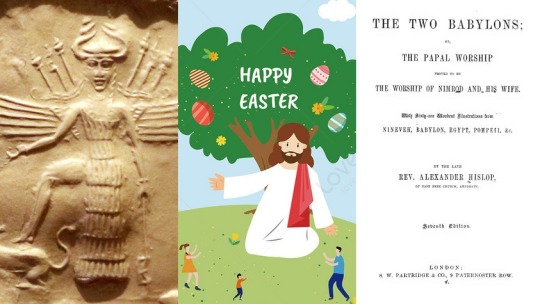
Once upon a time the official facebook page of Richard Dawkins' foundation posted a graphic according to which the holiday of Easter is just a rebranded celebration of the Mesopotamian mythology superstar Ishtar, arguing that the evidence is contained in its very name. As everyone knows, Dawkins is an online talking head notable for discussing his non-belief in such an euphoric way that it might turn off even the most staunch secularists and for appearing in some reasonably funny memes about half a decade ago. Bizarrely enough, however, the same claim can be often found among the crowds dedicated to crystal healing, Robert Graves' mythology fanfiction, indigo children and similar dubiously esoteric content. What's yet more surprising is that once in a while it shows up among a certain subset of fundamentalist Christians, chiefly the types who believe giants are real (and, of course, satanic), the world is ruled by a secret group of Moloch worshipers and fossils were planted by the devil to led the sheeple astray from the truth about earth being 6000 years old, tops. Of course, to anyone even just vaguely familiar with Christianity whose primary language isn't English this claim rightfully seems completely baffling – after all it's evident in most languages that the name of the holiday celebrating Jesus' resurrection, and many associated customs, are derived from the earlier Jewish Pascha (Passover) which has nothing to do with Ishtar other than having its origin in the Middle East. Why would the purported association only be evident in English and not in Aramaic, Greek, Latin, Spanish, virtually any language other than English and its close relatives – languages which generally didn't have anything to do with Mesopotamia or early christianity? Read on to find out what sort of sources let this eclectic selection of characters arrive to the same baffling conclusion, why are they hilariously wrong, and – most importantly – where you can actually find a variety of Ishtars (or at least reasonably Ishtar-like figures) under different names instead.
The story of baffling Easter claims begins in Scotland in the 19th century. A core activity of theologians in many faiths through history was (and sometimes still is) finding alleged proof of purported “idolatry” or other “impure” practices among ideological opponents, even these from within the same religion – and a certain Presbyterian minister, Alexander Hislop, was no stranger to this traditional pastime. Like many Protestants in this period, he had an axe to grind with the catholic church - though not for the reasons many people are not particularly fond of this institution nowadays. What Hislop wanted to prove was much more esoteric – he believed that it's the Babylon known from the Book of Revelations. Complete with the beast with seven heads, blasphemous names and other such paraphernalia, of course. This wasn't a new claim – catholicism was equated with the New Testament Babylon for as long as Protestantism was a thing (and earlier catholicism itself regarded other religions as representing it). What set Hislop apart from dozens of other similar attempts like that was that he fancied himself a scholar of history and relied on the brand new accounts of excavations in what was once the core sphere of influence of the Assyrian empire (present day Iraq and Syria), supplemented by various Greek and Roman classics – though also by his own ideas, generally varying from baseless to completely unhinged. Hislop compiled his claims in the book The Two Babylons or The Papal Worship Proved to be the Worship of Nimrod and His Wife. You can find it on archive.org if you want to torment yourself and read the entire thing – please do not give clicks directly to any fundie sites hosting it though. How does the history of Easter and Ishtar look like according to Hislop? Everything started with Semiramis, who according to his vision was a historical figure and a contemporary of Noah's sons, here also entirely historical. Semiramis is either entirely fictional or a distorted Greek and Roman account of the 9th century BC Assyrian queen Shammuramat, who ruled as a regent for a few years after the death of her husband Shamshi Adad V – an interesting piece of historical trivia, but arguably not really a historical milestone, and by the standards of Mesopotamian history she's hardly a truly ancient figure. Hislop didn't even rely on the primary sources dealing with the legend of Semiramis though, but with their medieval christian interpretations, which cast her in the role of an adulterer first and foremost due to association of ancient Mesopotamia with any and all vices.
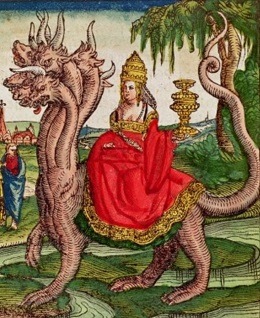
Hislop claims that Semiramis was both the Whore of Babylon from the Book of Revelations and the first idolater, instituting worship of herself as a goddess. This goddess, he argues, was Astarte (a combination of two flimsy claims – Roman claim that Semiramis' name means “dove” and now generally distrusted assumption that Phoenician Astarte had the same symbols as Greek Aphrodite) and thus Ishtar, but he also denotes her as a mother goddess – which goes against everything modern research has to say about Ishtar, of course. However, shoddy scholarship relying on few sources was the norm at the time, and Hislop on top of that was driven by religious zeal. In further passages, he identified this “universal mother” with Phrygian Cybele, Greek Rhea and Athena, Egyptian Isis, Taoist Xi Wangmu (sic) and many more, pretty much at random, arguing all of them were aspects of nefarious Semiramis cult which infected all corners of the globe. He believed that she was venerated alongside a son-consort, derived from Semiramis' even more fictional husband Ninus (a mythical founder of Assyria according to Greek authors, absent from any Mesopotamian sources; his name was derived from Nineveh, not from any word for son like Hislop claims), who he identifies with biblical Nimrod (likewise not a historical figure, probably a distorted reflection of the god Ninurta). Note the similarity with certain ideas perpetrated by Frazer's Golden Bough and his later fans like Jung, Graves and many neopagan authors – pseudohistory, regardless of ideological background, has a very small canon of genuinely original claims. Ishtar was finally introduced to Britain by “druids” (note once again the similarity to the baffling integration of random Greek, Egyptian or Mesopotamian deities into Graves-derived systems of fraudulent trivia about “universal mother goddesses” often using an inaccurate version of Celtic myths as framework). This eventually lead to the creation of the holiday of Easter. Pascha doesn't come up in the book at all, as far as I can tell. All of this is basically just buildup for the book's core shocking reveal: catholic veneration of Mary and depictions of Mary with infant Jesus in particular are actually the worship of Semiramis and her son-consort Ninus, and only the truly faithful can reveal this evil purpose of religious art. At least so claims Hislop. This bizarre idea is laughable, but it remains disturbingly persistent – do you remember the Chick Tracts memes from a few years ago, for example? These comics were in part inspired by Hislop's work. Many fundamentalist christian communities appear to hold his confabulations in high esteem up to this day – and many people who by design see themselves as a countercultural opposition to christianity independently gleefully embrace them, seemingly ignorant of their origin. While there are many articles debunking Hislop's claim about Easter, few of them try to show how truly incomprehensibly bad his book is as a whole – hopefully the following examples will be sufficient to illustrate this point: -Zoroaster is connected to Moloch because of the Zoroastrian holy fire - and Moloch is, of course Ninus. Note that while a few Greek authors believed Zoroaster to be the “king of Bactria” mythical accounts presented as a contemporary of Ninus, the two were regarded as enemies – Hislop doesn't even follow the pseudohistory he uses as proof! -Zoroaster is also Tammuz. Tammuz is, of course, yet another aspect of Ninus. -demonic character is ascribed to relics of the historical Buddha; also he's Osiris. And Ninus. -an incredibly racist passage explains why the biblical Nimrod (identified with – you guessed it - Ninus) might be regarded as “ugly and deformed” like Haephestus and thus identical to him (no, it makes no sense in context either) - Hislop thinks he was black (that's not the word he uses, naturally) which to him is the same thing. -Attis is a deification of sin itself -the pope represents Dagon (incorrectly interpreted as a fish god in the 19th century) -Baal and Bel are two unrelated words – this is meant to justify the historicity of the Tower of Babel by asserting it was built by Ninus, who was identical to Bel (in reality a title of Marduk); Bel, according to Hislop, means “the confounder (of languages)” rather than “lord” -the term “cannibal” comes from a made up term for priests of Baal (Ninus) who according to Hislop ate children. In reality it's a Spanish corruption of the endonym of one of the first tribes encountered by the Spanish conquerors in America, and was not a word used in antiquity – also, as I discussed in my Baal post, the worship of Baal did not involve cannibalism. This specific claim of Hislop's is popular with the adherents of prophetic doomsday cult slash wannabe terrorist group QAnon today, and shows up on their “redpilling” graphics. -Ninus was also Cronos; Cronos' name therefore meant “horned one” in reference to Mesopotamian bull/horned crown iconography and many superficially similar gods from all over the world were the same as him - note the similarity to Margaret Murray's obsession with her made up idea of worldwide worship of a “horned god” (later incorporated into Wicca). -Phaeton, Orpheus and Aesculapius are the same figure and analogous to Lucifer (and in turn to Ninus) -giants are real and they're satanists (or were, I think Hislop argues they're dead already). They are (were?) also servants of Ninus. -as an all around charming individual Hislop made sure to include a plethora of comments decrying the practices of various groups at random as digressions while presenting his ridiculous theories – so, while learning about the forbidden history of Easter, one can also learn why the author thinks Yezidi are satanists, for example -last but not least, the very sign of the cross is not truly christian but constitutes the worship of Tammuz, aka Ninus (slowly losing track of how many figures were regarded as one and the same as him by Hislop). Based on the summary above it's safe to say that Hislop's claim is incorrect – and, arguably, malevolent (and as such deserves scrutiny, not further possibilities for spreading). However, this doesn't answer the question where does the name of Easter actually come from? As I noted in the beginning, in English (and also German) it's a bit of an oddity – it actually was derived from a preexisting pagan term, at least if we are to believe the word of the monk Bede, who in the 8th century wrote that the term is a derivative of “Eosturmonath,” eg. “month of Eostre” - according to him a goddess. There are no known inscriptions mentioning such a goddess from the British Isles or beyond, though researchers involved in reconstructing proto-indo-european language assume that “Eostre” would logically be a derivative of the same term as the name of the Greek Eos and of the vedic Ushas, and the Austriahenae goddesses from Roman inscriptions from present day Germany – eg. a word simply referring to dawn, and by extension to a goddess embodying it. This is a sound, well researched theory, so while early medieval chroniclers sometimes cannot be trusted, I see no reason to doubt Bede's account.
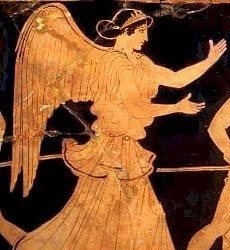
While Ushas is a prominent goddess in the Vedas, Eos was rather marginal in Greek religion (see her Theoi entry for details), and it's hard to tell to what degree Bede's Eostre was similar to either of them beyond plausibly being a personification of dawn. Of course, the hypothetical proto-indo-european dawn goddess all of these could be derived from would have next to nothing to do with Ishtar. While the history of the name of Easter (though not the celebration itself) is undeniably interesting, I suppose it lacks the elements which make the fake Ishtar claim a viral hit – the connection is indirect, and an equivalent of the Greek Eos isn't exactly exciting (Eos herself is, let be honest, remembered at best as an obscure part of the Odyssey), while Ishtar is understood by many as “wicked” sex goddess (a simplification, to put it very lightly) which adds a scandalous, sacrilegious dimension to the baffling lie, explaining its appeal to Dawkins' fans, arguably. As demonstrated above, Hislop's theories are false and adapting them for any new context – be it christian, atheist or neopagan – won't change that, but are there any genuine examples of, well, “hidden Ishtars”? If that's the part of the summary which caught your attention, rejoice – there is a plenty of these to be found in Bronze Age texts. I'd go as far as saying that most of ancient middle eastern cultures from that era felt compelled to include an Ishtar ersatz in their pantheons. Due to the popularity of the original Ishtar, she was almost a class of figures rather than a single figure – a situation almost comparable to modern franchising, when you think about it. The following figures can be undeniably regarded as “Ishtar-like” in some capacity or even as outright analogs:
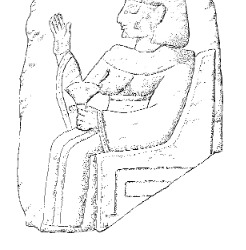
Astarte (or Ashtart, to go with a more accurate transcription of the oldest recorded version of the name) – the most direct counterpart of Ishtar there is: a cognate of her own name. Simply, put Astarte is the “Levantine”equivalent of the “Mesopotamian” Ishtar. In the city of Mari, the names were pretty much used interchangeably, and some god lists equate them, though Astarte had a fair share of distinct traits. In Ugaritic mythology, which forms the core of our understanding of the western Semitic deities, she was a warrior and hunter (though it's possible that in addition to conventional weapons she was also skilled at wielding curses), and was usually grouped with Anat. Both of them were regarded as the allies of Baal, and assist him against his enemies in various myth. They also were envisioned to spend a lot of time together – one ritual calls them upon as a pair from distant lands where they're hunting together, while a fragmentary myth depicts both of them arriving in the household of the head god El and taking pity on Yarikh, the moon god, seemingly treated as a pariah. Astarte's close relation to Baal is illustrated by her epithet, “face of Baal” or “of the name of Baal.” They were often regarde as a couple and even late, Hellenic sources preserve a traditional belief that Astarte and “Adados” (Baal) ruled together as a pair. In some documents from Ugarit concerned with what we would call foreign policy today they were invoked together as the most prominent deities. It's therefore possible that she had some role related to human politics. She was regarded as exceptionally beautiful and some texts favorably describe mortal women's appearance by comparing them to Astarte. In later times she was regarded as a goddess of love, but it's unclear if that was a significant aspect of her in the Bronze Age. It's equally unclear if she shared Ishtar's astral character – in Canaan there were seemingly entirely separate dawn and dusk deities. Despite clamis you might see online, Astarte was not the same as the mother goddess Asherah. In the Baal cycle they actually belong to the opposing camps. Additionally, the names are only superficially similar (one starts with an aleph, the other with an ayin) and have different etymology. Also, that famous sculpture of a very blatantly Minoan potnia theron? Ugaritic in origin but not a depiction of either Astarte or Asherah.
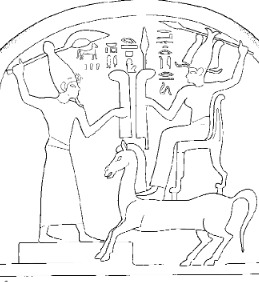
The Egyptians, due to extensive contact with Canaan and various Syrian states in the second half of the Bronze Age, adapted Astarte (and by extension Anat) into their own pantheon. Like in Ugarit, her warrior character was emphasized. An Egyptian innovation was depicting her as a cavalry goddess of sorts – associated with mounted combat and chariots. In Egypt, Ptah, the head god of Memphis and divine craftsman, was regarded as her father. In most texts, Astarte is part of Seth's inner circle of associates – however, in this context Seth wasn't the slayer of Osiris, but a heroic storm god similar to Baal. The so-called Astarte papyrus presents an account of a myth eerily similar to the Ugaritic battle between Baal and Yam – starring Seth as the hero, with Astarte in a supporting role resembling that played by Shaushka, another Ishtar analog, in the Hittite song of Hedammu, which will be discussed below.
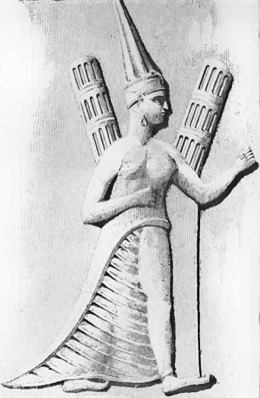
Shaushka – a Hurrian and Hittite goddess whose name means “the magnificent one” in the Hurrian language. Hurrian was widely spoken in ancient Mesopotamia and Anatolia (and in northernmost parts of the Levant – up to one fifth of personal names from Ugaritic documents were Hurrian iirc), but has no descendants today and its relation to any extant languages is uncertain. In Hittite texts she was often referred to with an “akkadogram” denoting Ishtar's name (or its Sumerian equivalent) instead of a phonetic spelling of her own (there was an analogous practice regarding the sun gods), while in Egyptian and Syrian texts there are a few references to “Ishtar Hurri” - “Ishtar of the Hurrians” - who is argued by researchers to be one and the same as Shaushka. Despite Shaushka's Hurrian name and her prominence in myths popular both among Hittites and Hurrians, her main cult center was the Assyrian city of Nineveh, associated with Ishtar herself as well, and there were relatively few temples dedicated to her in the core Hittite sphere of influence in Anatolia. Curiously, both the oldest reference to Shaushka and to the city of Nineveh come from the same text, stating that a sheep was sacrificed to her there. While most of her roles overlap with Ishtar's (she too was associated with sex, warfare and fertility), here are two distinct features of Shaushka that set her apart as unique: one is the fact she was perceived in part as a masculine deity, despite being consistently described as a woman – in the famous Yazılıkaya reliefs she appears twice, both among gods and goddesses. In Alalakh she was depicted in outfits combining elements of male and female clothing. Similar fashion preferences were at times attributed to Ninshubur, the attendant of Ishtar's Sumerian forerunner Inanna – though in that case they were likely the result of conflation of Ninshubur with the male messenger deity Papsukkal, while in the case of Shaushka the dual nature seems to be inherent to her (I haven't seen any in depth study of this matter yet, sadly, so I can't really tell confidently which modern term in my opinion describes Shaushka's character the best). Her two attendants, musician goddesses Ninatta and Kulitta, do not share it. Shaushka's other unique niche is her role in exorcisms and incantations, and by extension with curing various diseases – this role outlived her cult itself, as late Assyrian inscriptions still associated the “Ishtar of Nineveh” (at times viewed as separate from the regular Ishtar) with healing. It can be argued that even her sexual aspect was connected to healing, as she was invoked to cure impotence. The most significant myth in which she appears is the cycle dedicated to documenting the storm god's (Teshub for the Hurrians, Tarhunna for the Hittites) rise to power. Shaushka is depicted as his sister and arguably most reliable ally, and plays a prominent role in two sections in particular – the Song of Hedammu and the Song of Ullikummi. In the former, she seemingly comes up with an elaborate plan to defeat a new enemy of her brother - the sea monster Hedammu - by performing a seductive dance and song montage (with her attendants as a support act) and offering an elixir to him. The exact result is uncertain, but Hedammu evidently ends up vanquished. In the latter, she attempts to use the same gambit against yet another new foe, the “diorite man” Ullikummi – however, since he is unfeeling like a rock, she fails; some translators see this passage as comedic. However, elsewhere in the Song, the storm god's main enemy Kumarbi and his minions view Shaushka as a formidable warrior, and in the early installment of the cycle, Song of LAMMA, she seemingly partakes in a fight. In another myth, known only from a few fragments and compared to the Sumerian text “Inanna and the huluppu tree,” Shaushka takes care of “Ḫašarri” - a personification of olive oil, or a sentient olive tree. It seems that she has to protect this bizarre entity from various threats. While Shaushka lived on in Mesopotamia as “Ishtar of Nineveh,” this was far from the only “variant”of Ishtar in her homeland.
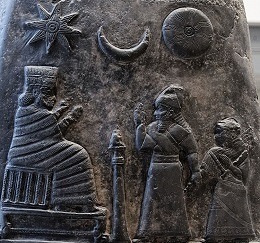
Nanaya was another such goddess. A few Sumerian hymns mention her alongside Inanna, the Sumerian equivalent of Ishtar, by the time of Sargon of Akkad virtually impossible to separate from her. As one composition puts it, Nanaya was “properly educated by holy Inana” and “counselled by holy Inana.” Initially she was most likely a part of Inanna's circle of deities in her cult center, Uruk, though due to shared character they eventually blurred together to a large degree. Just like Inanna/Ishtar, Nanaya was a goddess of love, described as beautiful and romantically and sexually active, and she too had an astral character. She was even celebrated during the same holidays as Inanna. Some researchers go as far as suggest Nanaya was only ever Inanna/Ishtar in her astral aspect alone and not a separate goddess. However, there is also evidence of her, Inanna and the sky god An being regarded as a trinity of distinct tutelary deities in Uruk. Additionally, king Melishipak's kudurru shown above shows both Nanaya (seated) and Ishtar/Inanna (as a star). Something peculiar to Nanaya was her later association with the scribe god Nabu. Sometimes Nabu's consort was the the goddess Tashmetu instead, but I can't find any summary explaining potential differences between them – it seems just like Nanaya, she was a goddess of love, including its physical aspects. Regardless of the name used to describe Nabu's wife, she was regarded as a sage and scribe like him – this arguably gives her a distinct identity she lacked in her early role as part of Inanna's circle. As the above examples demonstrate, the popularity of the “Ishtar type” was exceptional in the Bronze Age – but is it odd from a modern perspective? The myths dedicated to her are still quite fun to read today – much like any hero of ancient imagination she has a plethora of adversaries, a complex love life (not to mention many figures not intended to be read as her lovers originally but described in such terms that it's easy to see them this way today – including other women), a penchant for reckless behavior – and most importantly a consistent, easy to summarize character. She shouldn't be a part of modern mass consciousness only because of false 19th century claims detached from her actual character (both these from Hislop's works and “secular”claims about her purported “real”character based on flimsy reasoning and shoddy sources) – isn't a female character who is allowed to act about the same way as male mythical figures do without being condemned for it pretty much what many modern mythology retellings try to create? Further reading: On Astarte: -entry in the Iconography of Deities and Demons in Ancient Near East database by Izak Cornelius -‛Athtart in Late Bronze Age Syrian Texts by Mark S. Smith -ʿAthtartu’s Incantations and the Use of Divine Names as Weapons by Theodore J. Lewis -The Other Version of the Story of the Storm-god’s Combat with the Sea in the Light of Egyptian, Ugaritic, and Hurro-Hittite Texts by Noga Ayali-Darshan -for a summary of evidence that Astarte has nothing to do with Asherah see A Reassessment of Asherah With Further Considerations of the Goddess by Steve A. Wiggins On Shaushka: -Adapting Mesopotamian Myth in Hurro-Hittite Rituals at Hattuša: IŠTAR, the Underworld, and the Legendary Kings by Mary R. Bacharova -Ishtar seduces the Sea-serpent. A new join in the epic of Ḫedammu (KUB 36, 56 + 95) and its meaning for the battle between Baal and Yam in Ugaritic tradition by Meindert Dijkstra -Ištar of Nineveh Reconsidered by Gary Beckman -Shaushka, the Traveling Goddess by Graciela Gestoso Singer -Hittite Myths by Harry A. Hoffner jr. -The Hurritic Myth about Šaušga of Nineveh and Ḫašarri (CTH 776.2) by Meindert Dijkstra -The West Hurian Pantheon and its Background by Alfonso Archi On Nanaya: -entry in Brill’s New Pauly by Thomas Richter -entry from the Ancient Mesopotamian Gods and Goddesses project by Ruth Horry -A tigi to Nanaya for Ishbi-Erra from The Electronic Text Corpus of Sumerian Literature -A balbale to Inana as Nanaya from The Electronic Text Corpus of Sumerian Literature -More Light on Nanaya by Michael P. Streck and Nathan Wasserman -More on the Nature and History of the Goddess Nanaya by Piotr Steinkeller A few introductory Ishtar/Inanna myths: -Inanna's descent to the netherworld -Inanna and the huluppu tree -Inanna and Enki -Enki and the world order -Inanna and Ebih -Dumuzid and Enkimdu
101 notes
·
View notes
Text
It should be noted that Semiramis the mythic figure is usually associated with an actual Assyrian ruler, Shammuramat (which is also the original Assyrian name, Semiramis is derived from I believe the Greek version of the name.)
Shammuramat was actually looked back upon rather fondly, as despite only ruling the Neo-Assyrian Empire as regent for 5 years (she ruled until her son could take the throne), she was pretty successful, with her crowing achievement arguably being the stabilizing of the Empire after a particularly devastating civil war.
55 notes
·
View notes